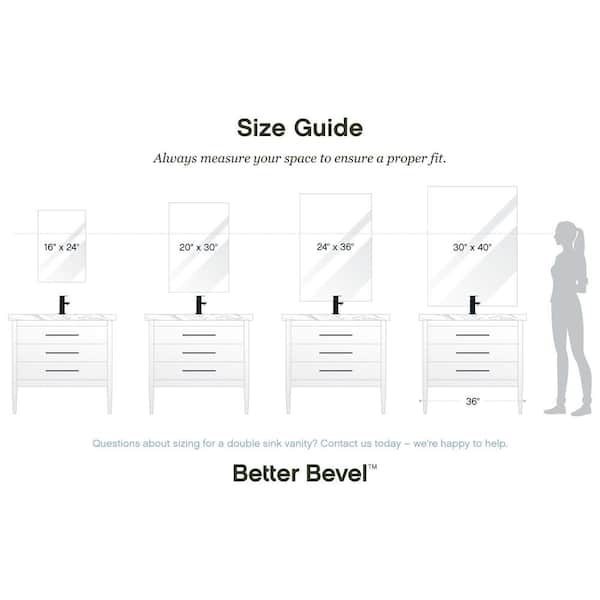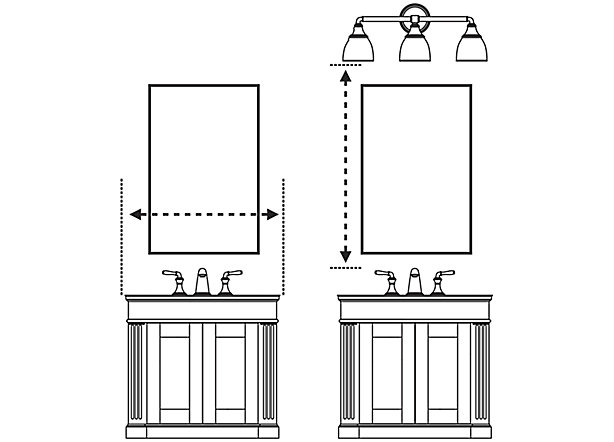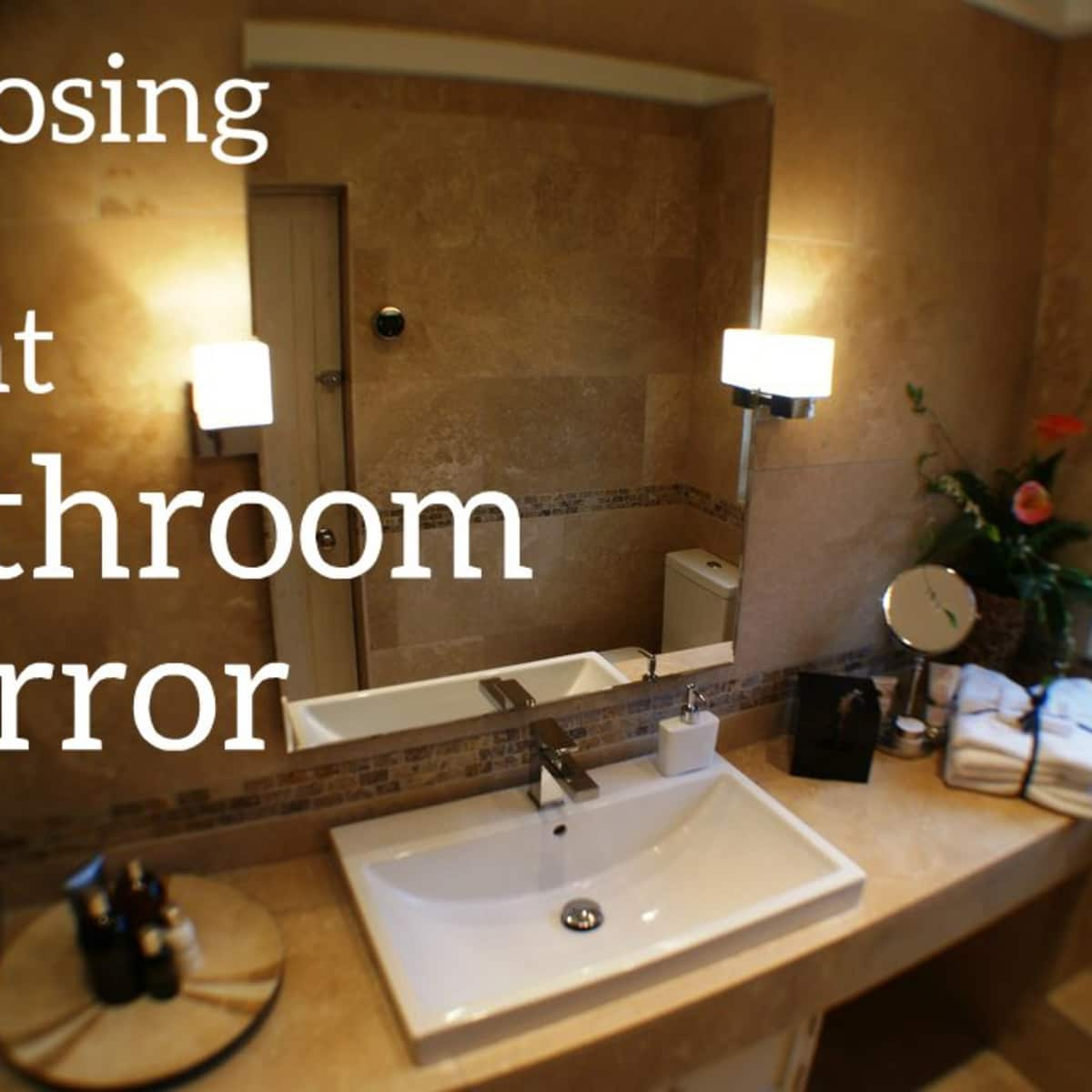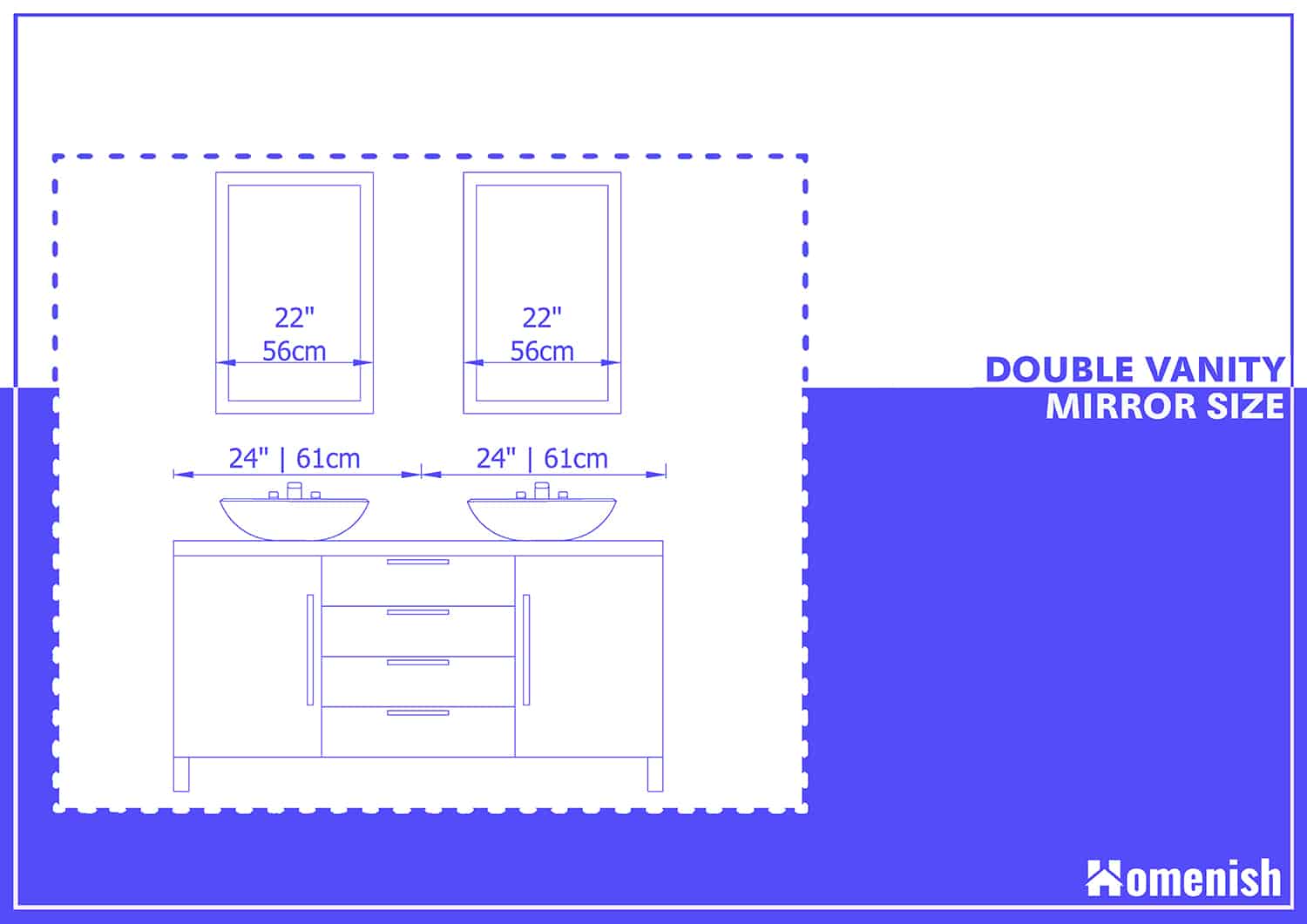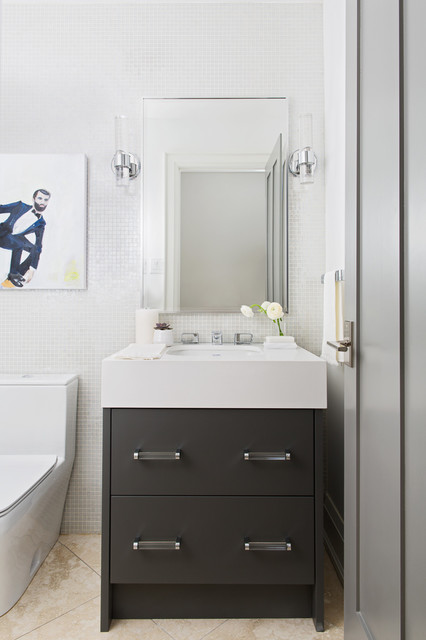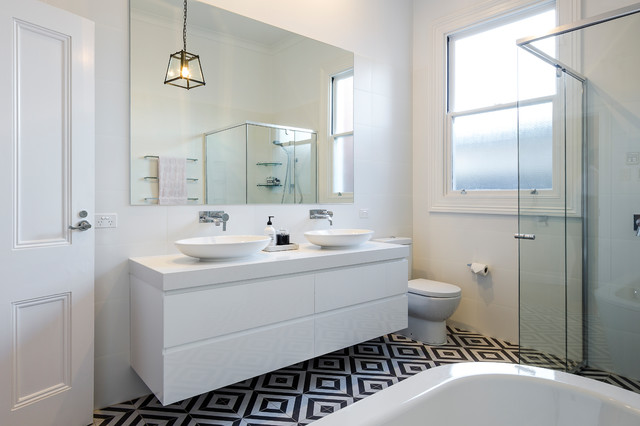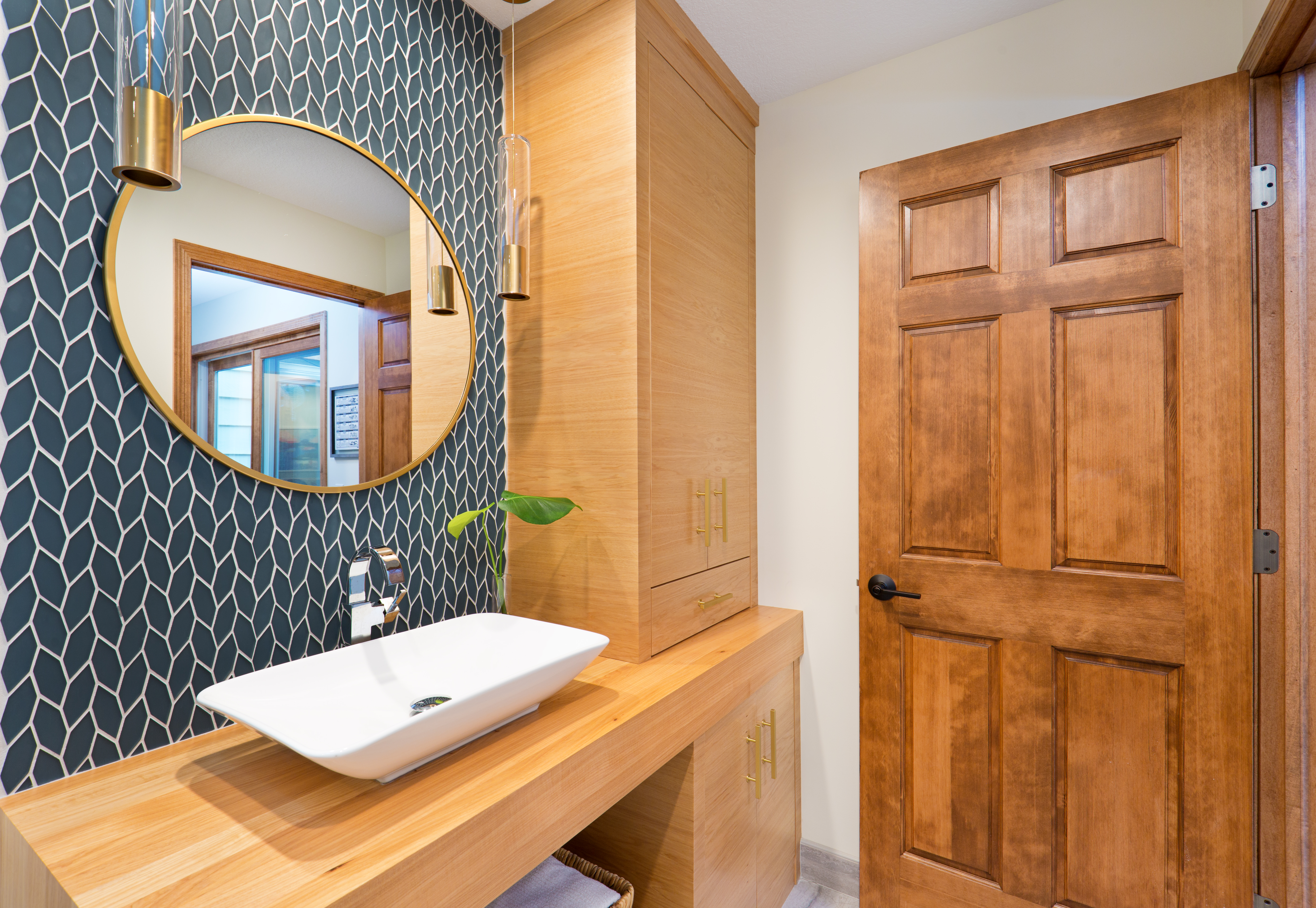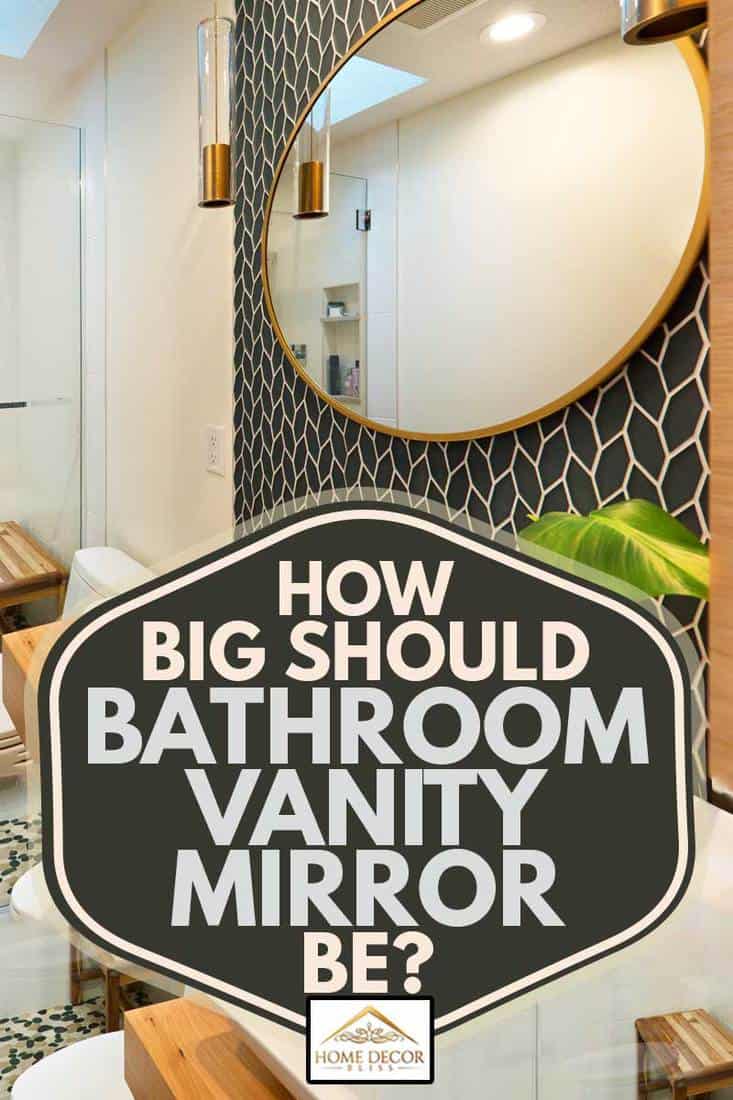Determining the appropriate size for a bathroom mirror involves considering several factors, including the dimensions of the vanity or sink area, the layout of the bathroom, and the overall design aesthetic you want to achieve. One common guideline for selecting the size of a bathroom mirror is to choose a mirror that is at least as wide as the vanity or sink below it. This ensures that the mirror provides sufficient coverage and reflects light evenly across the vanity area, enhancing visibility and functionality. Additionally, the height of the mirror should be proportional to the height of the vanity, with the top edge of the mirror positioned a few inches above the tallest faucet or light fixture to prevent water damage and create a cohesive look.
Another consideration when determining the size of a bathroom mirror is the available wall space and any architectural features that may impact the placement and size of the mirror. In bathrooms with limited wall space or unusual layouts, it may be necessary to choose a smaller mirror or consider alternative placement options, such as mounting the mirror on an adjacent wall or incorporating multiple smaller mirrors to create the illusion of a larger mirror.
The size of the bathroom mirror should also be proportionate to the size of the room and the scale of other design elements within the space. In smaller bathrooms, choosing a large mirror can visually expand the space and make it feel larger and more open. Conversely, in larger bathrooms with high ceilings and ample wall space, a smaller mirror may appear lost or disproportionate to the size of the room. Consider the overall balance and symmetry of the space when selecting the size of the mirror to ensure that it complements other design elements and enhances the overall aesthetic of the bathroom.
The style and shape of the bathroom mirror can also influence its size and impact on the space. Rectangular or oval mirrors are versatile options that work well with a variety of design styles and can be easily customized to fit different vanity sizes and layouts. However, for a more dramatic or contemporary look, consider opting for a larger or uniquely shaped mirror, such as a round or irregularly shaped mirror, to add visual interest and create a focal point in the room.
When selecting the size of a bathroom mirror, consider the functional requirements of the space and how the mirror will be used daily. For example, if the bathroom is used by multiple people or for tasks such as applying makeup or shaving, a larger mirror may be preferred to accommodate different heights and viewing angles. Additionally, consider incorporating features such as built-in lighting or magnification for added functionality and convenience.
Choosing the right size bathroom mirror involves considering factors such as the dimensions of the vanity area, available wall space, overall room size, and design aesthetic. By selecting a mirror that is proportionate to the vanity, complements the scale of the room, and meets the functional requirements of the space, homeowners can enhance the functionality and visual appeal of their bathrooms while creating a cohesive and harmonious design scheme. Whether opting for a large rectangular mirror for maximum coverage or a smaller round mirror for a more minimalist look, the size of the bathroom mirror plays a crucial role in shaping the overall look and feel of the room.
better bevel 20 in. W x 30 in. H Frameless Rectangular Bathroom
Mirrored Cabinets and Mirrors Guide KOHLER
Sizing the Mirror Above Your Bathroom Vanity – Dengarden
How to Decide the Perfect Mirror Size
Awesome Ways How to Craft Standard Bathroom Vanity Size
How to Choose a Bathroom Mirror
Trendy bath room mirror size guide 23+ ideas Bathroom mirror
How to Choose a Bathroom Mirror
How to Choose a Bathroom Mirror Size Hunker
How to Choose a Mirror Size for Your Bathroom Vanity
How to Choose a Bathroom Mirror Size
How Big Should A Bathroom Vanity Mirror Be? – Home Decor Bliss
Related articles:
- Oval Swivel Bathroom Mirror
- Farmhouse Bathroom Mirror
- Bathroom Mirror Design Ideas
- Small LED Bathroom Mirrors
- Bathroom Mirrors Vintage Style
- Decorative Bathroom Mirrors Sale
- Aluminum Framed Bathroom Mirrors
- Bathroom Mirrors With Lights Above
- Large Lighted Bathroom Mirror
- 16 Inch Bathroom Mirror
What Size Bathroom Mirror?
When renovating your bathroom, it’s important to select the perfect size mirror that fits the space and style of your bathroom. Choosing a bathroom mirror is no easy task as there are many factors to consider such as size, shape, and material. In this article, we will explore what size bathroom mirror is best for your bathroom and provide answers to some commonly asked questions.
Bathroom Mirror Measurements
The width of a bathroom mirror largely depends on the size of the sink or vanity. As a general rule, a single-sink vanity should be complemented by a mirror that is no larger than 24” wide. For double-sink vanities, you can use mirrors that are up to 48” wide. However, you may want to opt for a larger one that measures up to 60” wide if you have a lot of wall space.
When it comes to height, you should always make sure that the top of the mirror is at least 4” higher than the tallest person in your home so everyone can easily see their reflection. If you prefer a large vanity mirror, then choose one that measures at least 40” high. Lastly, make sure that your new mirror does not extend beyond the countertop to avoid any potential safety hazards.
Types of Bathroom Mirrors
Not all mirrors are created equal and there are many different types available on the market today. Framed mirrors are ideal for traditional bathrooms since they add an element of sophistication and elegance. On the other hand, frameless mirrors provide a more modern look and feel while still being practical and functional. If you want something more unique, then consider installing an oval or round-shaped bathroom mirror or even a lighted vanity mirror with built-in LED strips.
It’s important to note that there are also two types of edges when it comes to bathroom mirrors: beveled and non-beveled edges. Beveled edges provide a polished look while non-beveled edges give off more of an industrial vibe. Choose whichever one suits your taste best!
What is the standard size of a bathroom mirror?
The standard size of a bathroom mirror depends on several factors such as the size of the sink or vanity and how much wall space you have available. For single-sink vanities, select a mirror that is no larger than 24” wide while for double-sink vanities choose one that is up to 48” wide or even 60” wide if you have enough wall space available. The height should be at least 40” high with the top being 4” higher than the tallest person in your home so everyone can easily see their reflection in the mirror.
What type of bathroom mirrors should I choose?
When selecting a bathroom mirror, it’s important to consider both style and function. Framed mirrors work great for traditional bathrooms while frameless ones give off a more modern feel. For something more unique, try oval or round-shaped mirrors or even lighted vanity mirrors with built-in LED strips! Additionally, there are two types of edges when it comes to bathroom mirrors: beveled and non-beveled edges which offer different aesthetics depending on your tastes!
How do I hang my new bathroom mirror?
Hanging your new bathroom mirror is not as difficult as it may seem! Begin by measuring out where you want your new mirror to go so you have an idea of where you need to drill into the wall for mounting hardware installation. Then use an anchor screw combined with washers and nuts to securely mount your new bathroom mirror in place!
What type of mirror should I use in my bathroom?
The best type of mirror to use in a bathroom is an anti-fog or fog-free mirror. These mirrors are coated with a special treatment to prevent condensation buildup, so you won’t have to worry about wiping off the mirror after a shower. Frameless mirrors are also great for bathrooms, as they give it a more modern look. For a more traditional feel, framed mirrors are a great option. Be sure to choose a size that fits the space and complements the vanity and sink.
What are the benefits of using a frameless mirror in my bathroom?
Increased space: Frameless mirrors create the illusion of a larger space, as they blend in with the surrounding walls, making the bathroom appear more open and spacious.
Style: Frameless mirrors offer a sleek and modern look that can greatly enhance the overall aesthetic of your bathroom.
Easy to install: Frameless mirrors are lightweight and easy to hang or attach to the wall, which makes them a great DIY project for anyone looking for a quick and simple way to upgrade their bathroom decor.
Easy to clean: Since frameless mirrors don’t have any frames or corners, they are much easier to clean and maintain than framed mirrors.
Versatility: Frameless mirrors come in various shapes and sizes, so you can easily find one that fits your bathroom’s dimensions and design.


